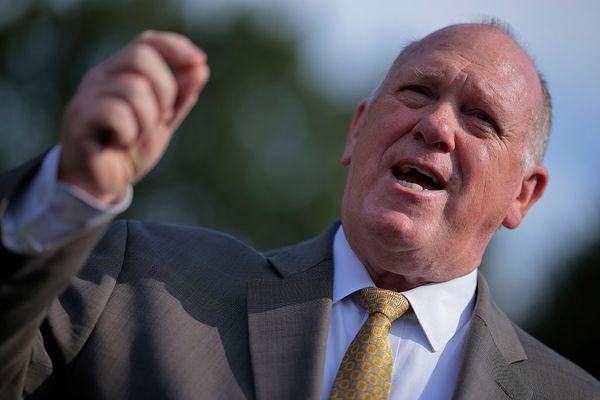
The “Last Call killings” were the murders of four men in New York City between 1991 and 1993: they were picked up in gay bars before being drugged, stabbed and dismembered. Richard Rogers, a paediatric nurse from Staten Island, is serving life in prison for two of the killings and is probably responsible for the others. Last Call: When a Serial Killer Stalked Queer New York explains what Rogers did and how he was caught, but this four-part series is much more than mere true-crime documentary. As it widens its outlook to explore how such an atrocity could have occurred, its political savviness and thoughtful tenderness make it a masterclass in righteous, acutely relevant reporting.
Having interviewed the numerous detectives assigned to the case (the killer’s habit of dumping bagged body parts next to country roads meant the New Jersey, Pennsylvania and New York state police were all involved, as well as the NYPD), Last Call sits back and lets the prejudices of these interviewees seep out. Even the most conscientious cops hint at a reduced competency born out of ignorance: of course, they didn’t know where Manhattan’s gay bars were and weren’t able to draw on any knowledge of the gay scene, they say, looking affronted that this should even be questioned. Director Anthony Caronna includes an out-take of him wondering, after a pair of detectives have answered all his questions, whether they have anything to add. One pipes up immediately with an objection that has clearly been brewing all through their discussion of the Last Call killer: “Why is the emphasis on the gay part?”
If the officer watches the series he has appeared in, he will get a comprehensive answer. The meat of Last Call is an enraging overview of hate crime in the 80s and 90s, mainly remembered by activists from the Anti-Violence Project (AVP), an LGBT organisation set up to counsel survivors of homophobic attacks. The AVP was saddened when the investigation into the Last Call murders was slow, inept and distant, but not surprised. It recalls an era when “gay-bashing” was rampant, and the details are horrific: one AVP officer holds up a map of violent crimes in 1991 in Chelsea and the West Village, featuring so many incidents that the red dots blot out the map; another recalls mobs of men arriving armed with golf clubs.
We see footage of 70s anti-gay campaigner Anita Bryant, whose bigotry was immortalised in 1977 when the murderer of gay San Francisco resident Robert Hillsborough shouted – according to the programme – “This one’s for Anita!” as he stabbed his victim. But Last Call, a series that takes delicate pains to cover every angle, emphasises that its vivid portrait of a bygone era is not ancient history. Recently, a spate of aggravated, occasionally murderous robberies has hit the NYC gay community. Anti-LGBT laws are being passed now across the US.
The Rogers case itself contains an example of old-fashioned injustice that, shockingly, persists. The awful final twist was that he had almost gone to jail in 1973 for bludgeoning his college roommate to death, but walked free in part because of his use of the “gay panic defence”, through which the accused can receive a more lenient sentence or acquittal by claiming they lost control in the face of unwanted sexual advances from their gay (or transgender) victim. Without that, Rogers might not have been free to roam New York City 20 years later. The gay panic defence is still admissible in 34 US states.
Laying all this out is one way in which a show such as Last Call can be useful and important rather than just an interesting documentary. The other is in providing tributes to the dead, giving us a sense of the unique, irreplaceable lives that were lost and allowing us a moment to celebrate them. Thus we are privileged to know Thomas Mulcahy, a loving father who adored Broadway musicals and old Hollywood glamour; Peter Anderson, retro-dapper in his trademark bow tie and oversized round glasses; Anthony Marrero, whose life as a sex worker on the rough streets of Manhattan was unknown to his Puerto Rican family; and Michael Sakara, who could always be found on the same stool at the Five Oaks piano bar, and often got up before last call to sing cabaret standard I’ll Be Seeing You. Then one night in 1993, Rogers walked in and sat down next to him.
The series’ most moving moment is a montage of the victims’ loved ones reflecting on how they must now live with loss, the bruises made blacker by knowing that, while the men were alive, all four – three of whom had felt they had to keep their sexuality a secret from their families – suffered simply because of who they were and who they loved. If Last Call’s vital message isn’t heeded, far too many others will feel the same pain.
Last Call: When a Serial Killer Stalked Queer NY aired on Sky Documentaries and is available on NOW in the UK and Binge in Australia.







